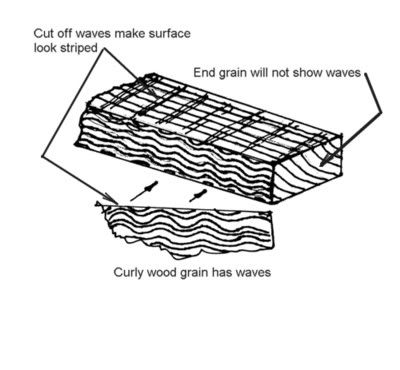Ike Godsey
45 Cal.
Howdy,
I am thinking of the use of ”žolder smoothbores“ in the colonies. Meaning weapons, which have been made maybe in 1720 or so, made by gunsmiths in the colonies, used as a hunting/militia weapon and then, given to the next generation(s) in the family.
I have seen some very beautiful weapons during my internet search, some them used “Curly Maple” wood for the stock. So I looked for Curly Maple and found this:
So I have some questions that the Internet left unanswered, but I know, here are many experts”¦
Is curly maple widely used in the colonies for fowler stocks, prior to the 1730s?
If yes, was this type of wood something special (by means of “expensive”, or something that shows “I am rich”), or was it the other way ”“ was it cheap wood?
If an “average” citizen in the colonies, member of its milita, would he have such a gun with that type of stockwood?
Or would cherry for a stock be a better choise?
Thank you in advance,
Ike :hatsoff:
I am thinking of the use of ”žolder smoothbores“ in the colonies. Meaning weapons, which have been made maybe in 1720 or so, made by gunsmiths in the colonies, used as a hunting/militia weapon and then, given to the next generation(s) in the family.
I have seen some very beautiful weapons during my internet search, some them used “Curly Maple” wood for the stock. So I looked for Curly Maple and found this:
Tiger maple is also often referred to as curly maple or flame maple.
Tiger maple is a temperate hardwood tree that grows mostly in the eastern United States and Canada and comes from the red maple tree. An interesting fact is that, not all maple trees produce tiger maple wood. The intensity, consistency and size of the pattern is what determines the grade or quality of Tiger Maple.
Since the 18th century when the use of tiger maple peaked in colonial America it is still used widely to this day.
So I have some questions that the Internet left unanswered, but I know, here are many experts”¦
Is curly maple widely used in the colonies for fowler stocks, prior to the 1730s?
If yes, was this type of wood something special (by means of “expensive”, or something that shows “I am rich”), or was it the other way ”“ was it cheap wood?
If an “average” citizen in the colonies, member of its milita, would he have such a gun with that type of stockwood?
Or would cherry for a stock be a better choise?
Thank you in advance,
Ike :hatsoff:







